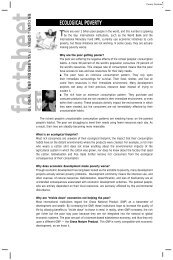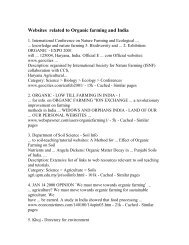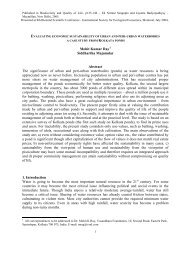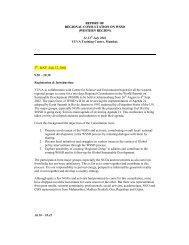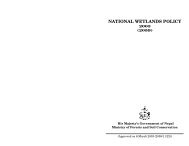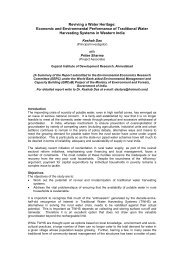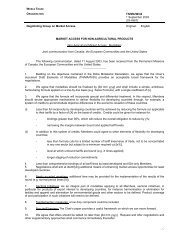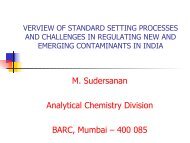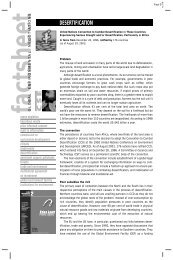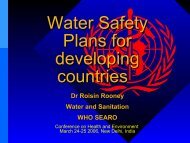Technical details - Rainwater Harvesting
Technical details - Rainwater Harvesting
Technical details - Rainwater Harvesting
You also want an ePaper? Increase the reach of your titles
YUMPU automatically turns print PDFs into web optimized ePapers that Google loves.
Maintenance<br />
<strong>Rainwater</strong> harvesting systems require few skills and little supervision to operate. Major concerns are the<br />
prevention of contamination of the tank during construction and while it is being replenished during a rainfall.<br />
Contamination of the water supply as a result of contact with certain materials can be avoided by the use of<br />
proper materials during construction of the system. The main sources of external contamination are pollution<br />
from the air, bird and animal droppings, and insects. Bacterial contamination may be minimized by keeping<br />
roof surfaces and drains clean but cannot be completely eliminated. If the water is to be used for drinking<br />
purposes, filtration and chlorination or disinfection by other means (e.g., boiling) is necessary. The following<br />
maintenance guidelines should be considered in the operation of rainwater harvesting systems:<br />
• A procedure for eliminating the "foul flush" after a long dry spell deserves particular attention.<br />
The first part of each rainfall should be diverted from the storage tank since this is most likely to<br />
contain undesirable materials, which have accumulated on the roof and other surfaces between<br />
rainfalls. Generally, water captured during the first 10 minutes of rainfall during an event of<br />
average intensity is unfit for drinking purposes. The quantity of water lost by diverting this runoff<br />
is usually about 14l/m 2 of catchment area.<br />
• The storage tank should be checked and cleaned periodically. All tanks need cleaning; their<br />
designs should allow for this. Cleaning procedures consist of thorough scrubbing of the inner<br />
walls and floors. Use of a chlorine solution is recommended for cleaning, followed by thorough<br />
rinsing.<br />
• Care should be taken to keep rainfall collection surfaces covered, to reduce the likelihood of<br />
frogs, lizards, mosquitoes, and other pests using the cistern as a breeding ground. Residents<br />
may prefer to take care to prevent such problems rather than have to take corrective actions,<br />
such as treating or removing water, at a later time.<br />
• Gutters and downpipes need to be periodically inspected and cleaned carefully. Periodic<br />
maintenance must also be carried out on any pumps used to lift water to selected areas in the<br />
house or building. More often than not, maintenance is done only when equipment breaks down.<br />
• Households must establish a maintenance routine that will be carried out by family members.<br />
As has been noted, in some cases the rainwater is treated with chlorine tablets. However, in most places it is<br />
used without treatment. In such cases, residents are advised to boil the water before drinking. Where cistern<br />
users do not treat their water, the quality of the water may be assured through the installation of<br />
commercially available in-line charcoal filters or other water treatment devices.<br />
<strong>Technical</strong> Details of <strong>Rainwater</strong> <strong>Harvesting</strong> 15




